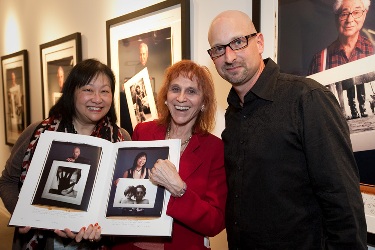Lessons from the Penn State sex abuse scandal
 Thursday, November 10, 2011 at 11:15PM
Thursday, November 10, 2011 at 11:15PM
In the wake of the sex abuse scandal at Penn State, revelations about the serial sex abuse allegedly perpetrated by assistant coach Sandusky, the firing of revered coach Joe Paterno and the rioting of Penn State students in his support:
1. Some media are hesitant to talk about the details of the grand jury findings against ex-Penn State coach Sandusky, fearing they are too lurid. Dr. Judy says we must not be ostriches putting our heads in the sand about child sex abuse. Glossing over what the disgraced coach did to the boys is like denying the horrors of pedophilia and child sex abuse.We must not skirt the issue and just say Sandusky is reported to have had “sex,” but instead we must say enough specifics to educate people about what child sex abuse is; for example, that he touched the young boys inappropriately and made one young boy put his hands up against a wall while he forced him to have anal sex from behind. That lets people know we are not afraid to face the facts and that we are brave enough to help people learn from this horrible case.
2. Use this case as a “teachable moment”: for all parents to talk to their young children about sex abuse. Tell them that it is not okay for anyone to touch them in their private parts, and that if they are touched in a way that makes them “feel funny,” they should tell you right away, and that you will do something to protect them.
3. Children need to be taught this lesson from the time they are little, even as young as five years old. Repeated child sex molestation even occurs to children as young as three.
4. This sex abuse scandal at Penn State is a wake-up call for all college campuses - and high schools- to have classes about sexuality, about sex abuse and even about sexual harassment -- since the statistics about “hallway harassment” are shockingly high. All parent-teachers associations and groups should insist on such classes in their schools.
5. People are up in arms about Penn State students rioting in favor of now-fired head coach Joe Paterno, caught on video and posted on Youtube. This rioting shows shocking disrespect for the kids who suffered the abuse. These students should be rounded up and showed the video interviews with the young boys who were molested. They should be asked, “How would you like it if you were forced up against a wall and the coach penetrated you sexually?” That will shock them out of their football frenzy and into a different state of mind.
6. Tremendous support should be offered the young men and their families who were “victims” of this abuse. By the way, should be called “survivors,” not victims. They have demonstrated great courage in coming forward. They need to be reassured that it is normal for them to have been confused – as one young man described – about what was happening when they were touched sexually by the coach, and for them to not be sure about how to react. Such confusion and fears (e.g. of shame, not being believed) are very common. They were understandably hesitant to report the experience, because they were getting benefits from the coach, and didn’t realize how they were being manipulated, seduced and bribed to keep quiet.
7. Some of these young boys who were abused are now finding strength in speaking out against child sex abuse, promoting an organization that helps survivors and provides education. In this way, they can turn their horror into healing by helping others. Others who have not yet come forward may be too afraid to publicly admit they too were abused but they can find strength in the others speaking out.
8. It is not uncommon for serial pedophiles ot have been abused when they were young, completing the cycle of abuse. But even if Sandusky had been abused as a young boy himself; this is in no way any excuse for his criminal behavior.
9. It is true that sports can stimulate sexuality, psychologically and also physically in that chemicals flow in the brain during the extreme activity, including adrenalin and endorphins. Similar reactions occur in activities where crowds and action n predominates, like rock concerts. Research proves this connection. From a constructive point of view, I developed “theme park therapy” for Universal Studios based on the principle that couples can fall in love when engaged in an exciting activity in a high-energy environment like a scary theme part ride, or in a large, reactive crowd at a concert or sporting event. But everyone must learn how to manage those feelings in appropriate situations, and to separate the “rush” from acting out sexually. Kids should be given lessons about how to manage these experiences, since the psychological and physical reactions can be confusing.
10. Parents might understandably be leery of allowing their kids to join team sports because of the abuse uncovered in this case. With adequate education, now that this scandal has been so public, kids can safely engage in the sport. All schools personnel, coaches and parents will now be on the alert.

